Arizona’s National Parks aren’t just breathtaking—they hide venomous legends.
Step off the well-worn path and into a desert where danger slithers silently. In the heat of sun-scorched canyons, nature’s fanged warriors wait in the shadows, poised to strike with ruthless precision. Every rustle in the scrub becomes a pulse-raising moment.
Roam rocky trails and discover 14 venomous snakes that call this wild land home. From rattlers with a bone-chilling warning to sleek vipers blending perfectly with the earth, these reptiles prove that the desert holds more than stunning vistas—it shelters raw, unpredictable power.
Prepare for a thrilling adventure through Arizona’s untamed wilderness, where each encounter reveals nature’s ability to both captivate and challenge. Grab your gear and step into a world where danger and beauty intertwine at every turn.
Western Diamondback Rattlesnake
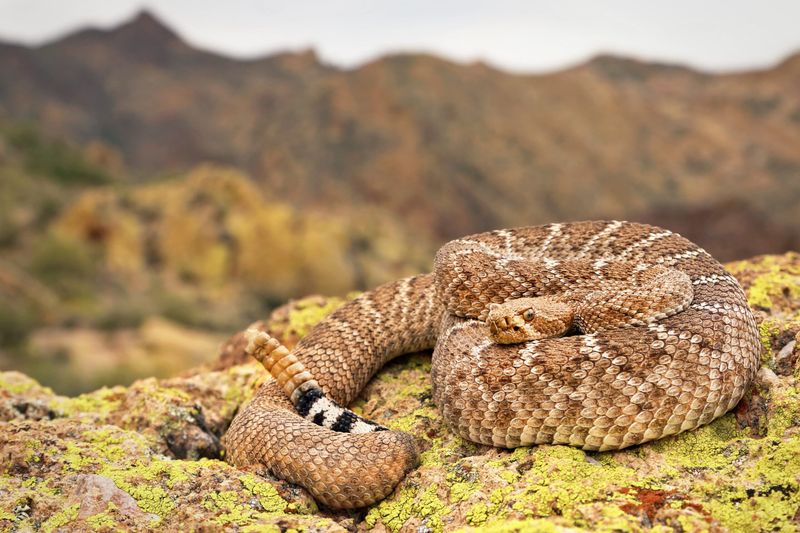
The Western Diamondback Rattlesnake is one of the most commonly encountered venomous snakes in Arizona. It is known for its characteristic diamond patterns along its back and its distinctive rattling tail. This snake prefers arid desert environments, often found sunbathing on rocks or hidden under desert shrubs.
Though intimidating, these snakes play a crucial role in controlling rodent populations. Their venom, while potent, is used primarily for hunting. If you encounter one, maintain a respectful distance. Their rattle is a clear warning to back off, ensuring both your safety and theirs.
Mojave Rattlesnake
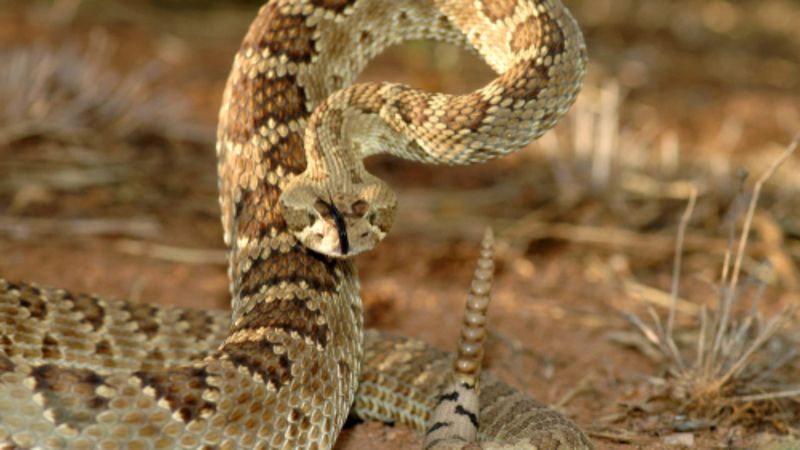
The Mojave Rattlesnake, notorious for its highly toxic venom, is a snake that commands respect. With its olive-green hue and distinctive tail rings, it blends into its desert surroundings. This species is often found in scrubby areas of Arizona’s national parks.
Mojave Rattlesnakes are reclusive by nature but will defend themselves if threatened. Their venom is a powerful neurotoxin, making them one of North America’s most dangerous snakes. Observing these snakes from a safe distance not only ensures your protection but also allows them to continue their ecological role undisturbed.
Arizona Black Rattlesnake
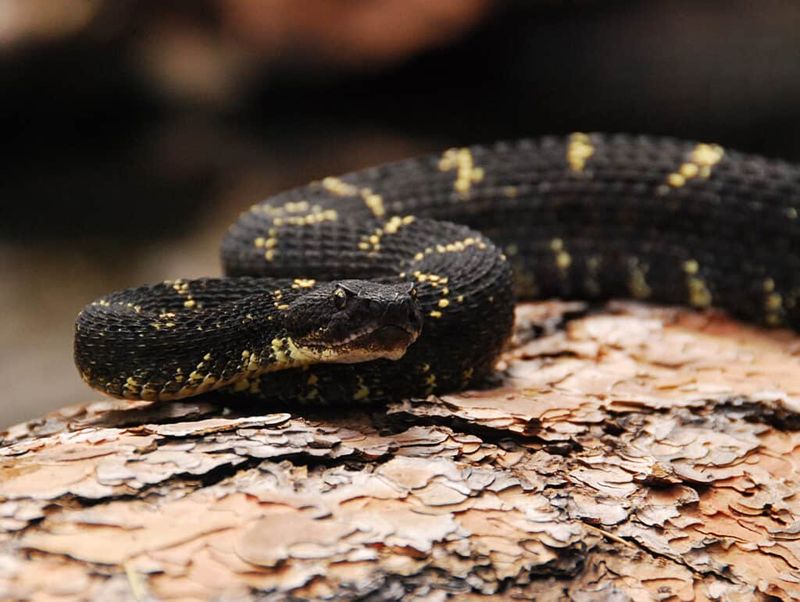
The Arizona Black Rattlesnake is a strikingly beautiful snake with deep black scales. Found mostly in northern Arizona, it prefers rocky terrains, particularly around the Grand Canyon. Its dark coloration provides excellent camouflage among the rocks.
Unlike many rattlesnakes, this species is quite elusive. Their venom, while less potent than the Mojave’s, can cause significant harm if mishandled. When hiking in their territory, wear sturdy boots and stay on designated trails. Respect for their space ensures a safer encounter, preserving the delicate balance of the ecosystem they inhabit.
Tiger Rattlesnake
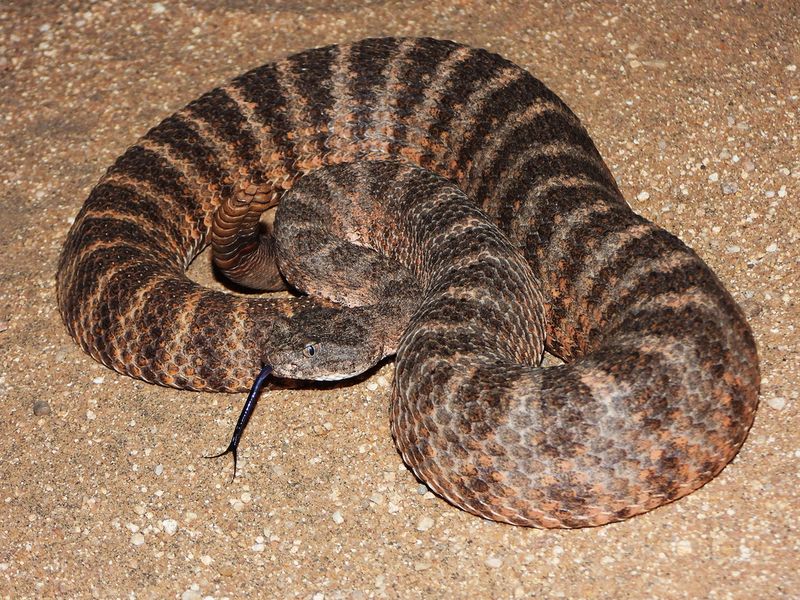
The Tiger Rattlesnake, residing in the Sonoran Desert, is easily recognizable by its distinctive tiger-like stripes. It boasts a small, flattened head and a slender body that helps it navigate its arid habitat. This species tends to be more active during the cooler hours of the day.
Despite its fearsome appearance, the Tiger Rattlesnake is typically not aggressive unless provoked. Its venom is highly toxic, primarily affecting the nervous system. Hikers and campers should exercise caution by watching their step and listening for the telltale rattle, a sign to give them space.
Sidewinder
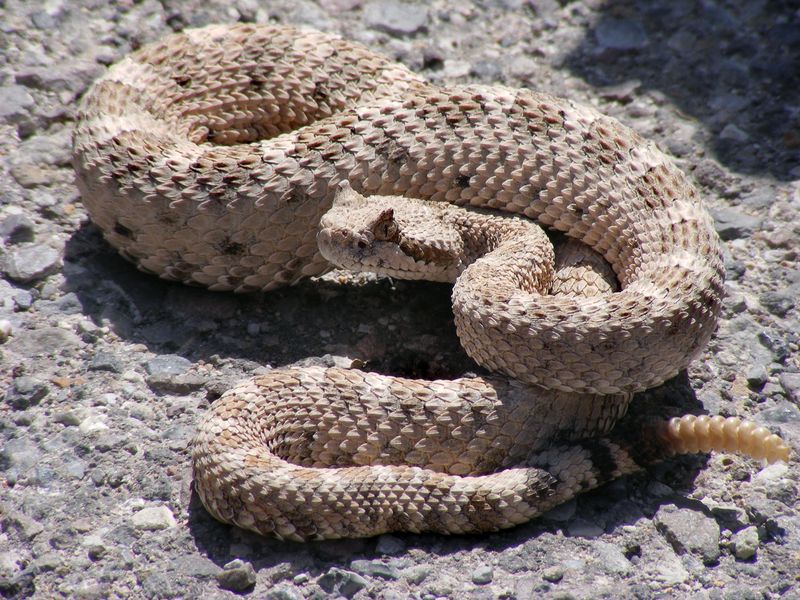
The Sidewinder Rattlesnake is a fascinating creature, well-adapted to the sandy dunes of Arizona. Known for its peculiar sideways movement, it leaves unique J-shaped tracks as it glides across the sand. This small but agile snake is primarily nocturnal, avoiding the intense desert heat.
Its venom is less potent compared to other rattlesnakes, yet it’s still effective against its prey. Spotting a sidewinder in action is a sight to behold. However, it’s wise to admire this snake from a distance, respecting its space to avoid any unnecessary encounters.
Speckled Rattlesnake

The Speckled Rattlesnake, true to its name, is masterfully camouflaged against the rocky desert landscapes of Arizona. Its speckled pattern mimics its surroundings, providing it with an excellent disguise. This snake is often seen basking in the sun or hiding among rocks.
Its venom is hemotoxic, causing tissue damage and blood clotting. This species is generally shy, preferring flight over fight. When exploring rocky areas, be vigilant, as these snakes can be hard to spot. Appreciating their beauty from afar ensures a safer experience for both you and the snake.
Grand Canyon Rattlesnake
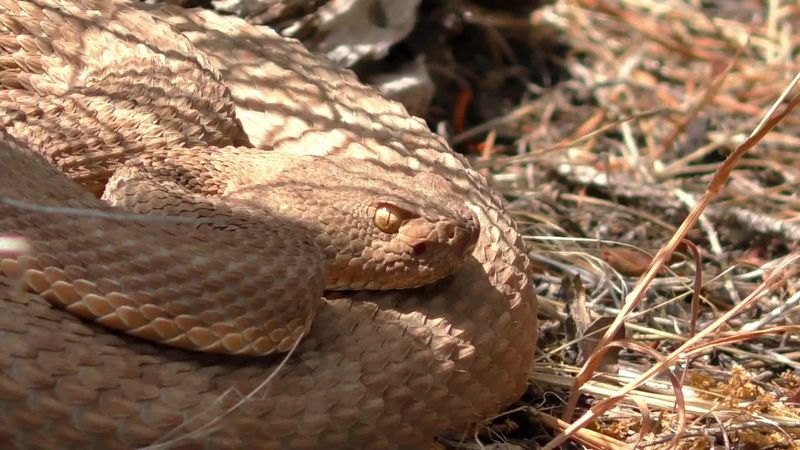
The Grand Canyon Rattlesnake is a unique species native to the Grand Canyon area. Its pinkish hue allows it to blend seamlessly with the canyon’s vibrant rocks. This snake is primarily found on the canyon’s ledges, basking in the sun to regulate its temperature.
Though it inhabits a popular tourist destination, it rarely poses a threat to humans when left undisturbed. Its venom is primarily designed for hunting small prey. Visitors should maintain a respectful distance, allowing this extraordinary snake to thrive in its natural habitat without interference.
Black-tailed Rattlesnake
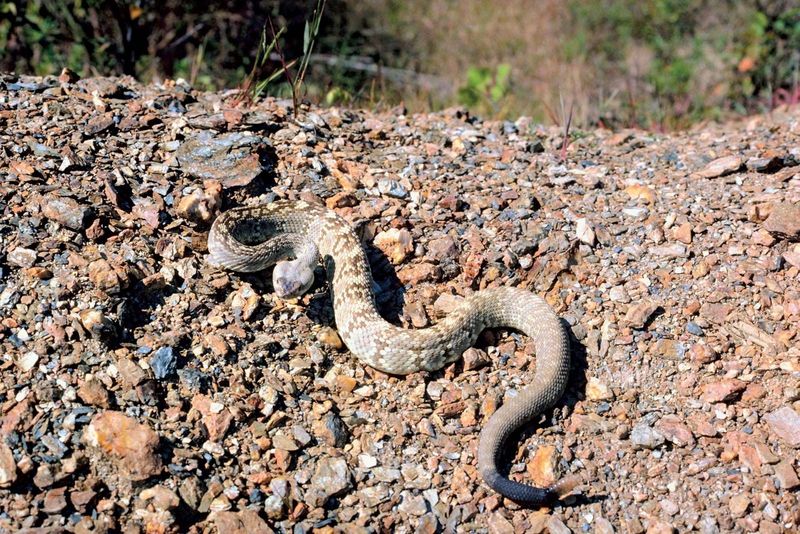
The Black-tailed Rattlesnake is a versatile species that inhabits various environments, from desert to forest. It is easily identifiable by its dark, black tail, which contrasts with its lighter body. This snake is often found in wooded areas, where it hunts small mammals.
Despite its formidable appearance, the Black-tailed Rattlesnake is generally not aggressive. Its venom is moderate, used primarily for subduing prey. Hikers in forested areas should be cautious, wearing appropriate footwear and being aware of their surroundings to avoid accidental encounters with this remarkable snake.
Twin-spotted Rattlesnake
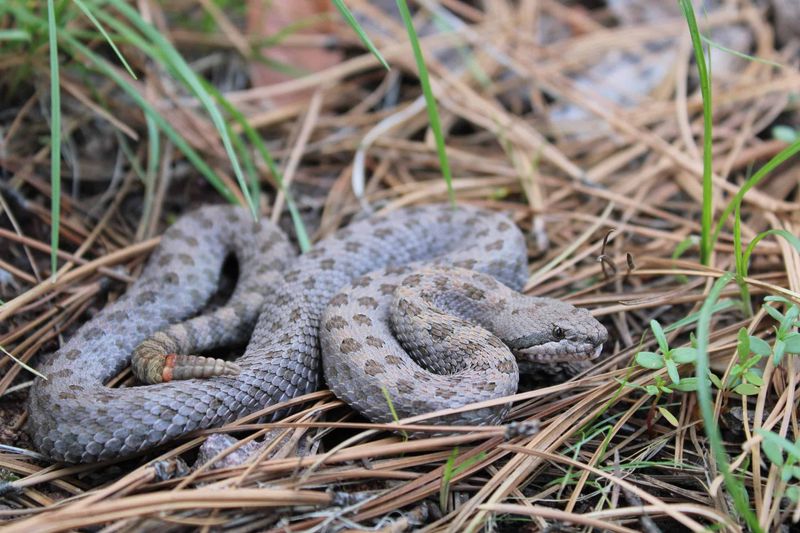
The Twin-spotted Rattlesnake is a small, slender snake characterized by its double row of dark spots. Found in higher elevations, it prefers rocky outcrops where its color provides effective camouflage. This species is more elusive, often evading human contact.
Its venom is relatively mild but can cause discomfort if bitten. Observing this snake requires keen eyes and patience. It’s a privilege to encounter such a well-adapted creature. Ensuring a safe distance allows you to witness the Twin-spotted Rattlesnake’s natural behavior without disturbing its serene habitat.
Prairie Rattlesnake
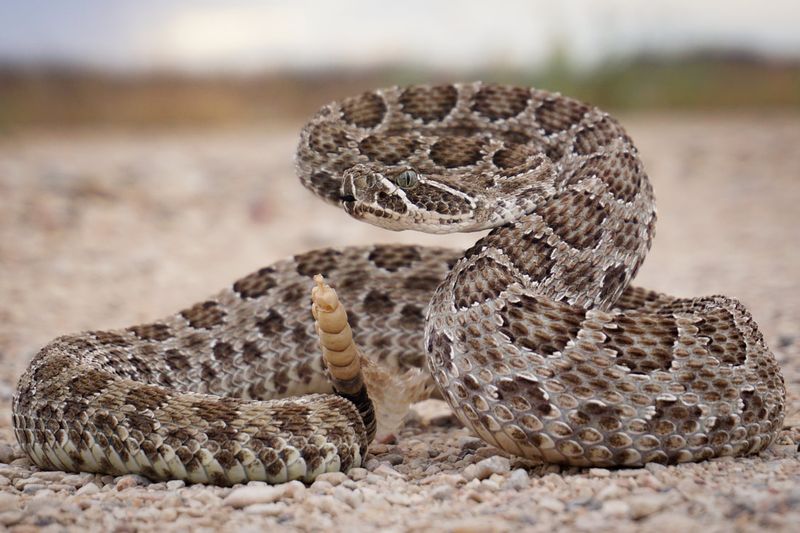
The Prairie Rattlesnake is a common sight in Arizona’s grasslands. Its brown and tan scales provide excellent camouflage among the dry grasses. This adaptable snake is known for its ability to thrive in various environments, from prairies to foothills.
Though it has a wide range, the Prairie Rattlesnake prefers solitude, avoiding human interaction whenever possible. Its venom is potent, used efficiently against small mammals. For those exploring the grasslands, staying on paths and being alert can prevent unwanted encounters, ensuring both your safety and the snake’s peace.
Rock Rattlesnake
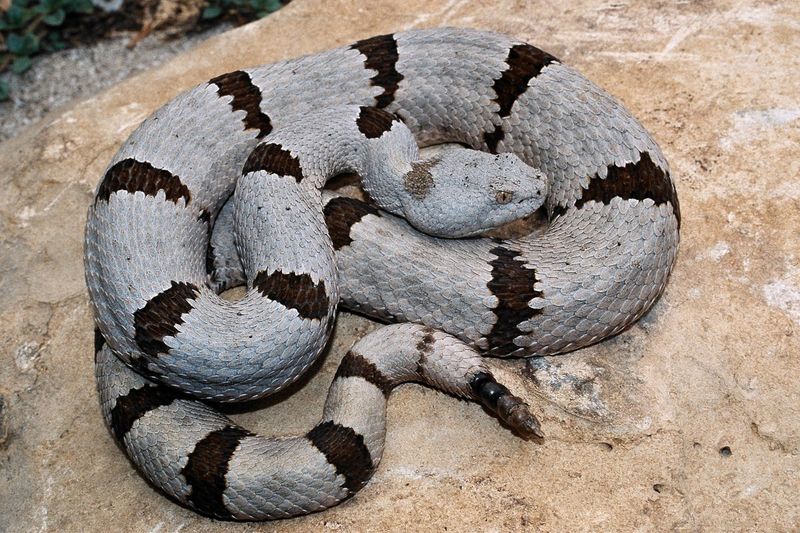
The Rock Rattlesnake is a master of disguise, blending perfectly with the gray rocks of its habitat. This small, elusive snake is usually found in rocky areas at higher elevations. Its mottled gray and brown pattern provides excellent camouflage, making it nearly invisible.
Despite its stealth, the Rock Rattlesnake is generally non-aggressive, preferring to retreat when threatened. Its venom is used primarily for hunting. When exploring rocky terrains, be cautious and watchful. Observing this snake in its natural environment is a testament to nature’s incredible ability to adapt and camouflage.
Western Coral Snake
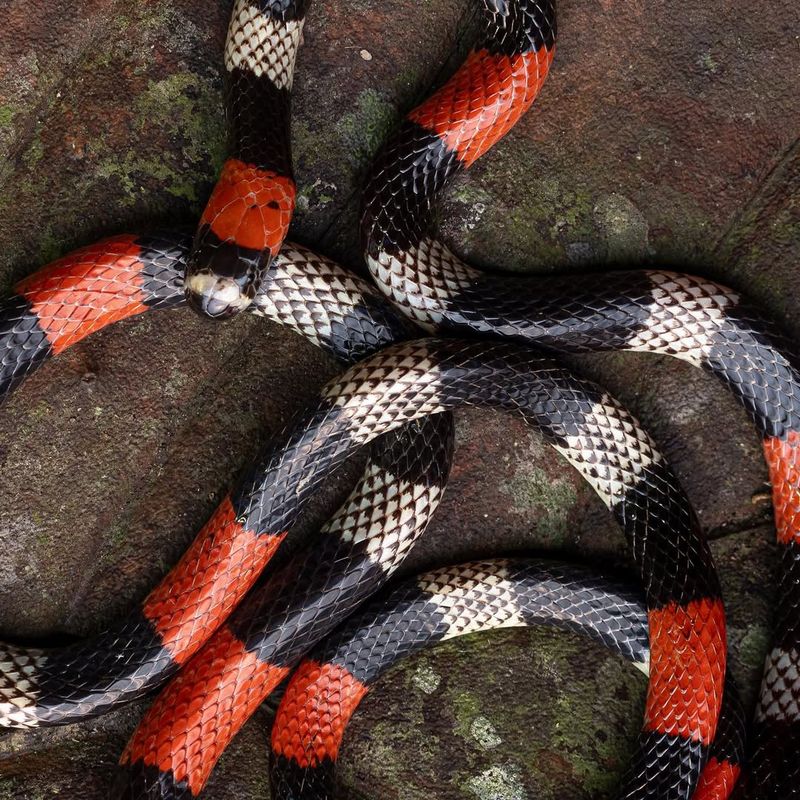
The Western Coral Snake, with its vibrant red, yellow, and black bands, is a stunning but elusive snake found in Arizona. Unlike rattlesnakes, it lacks a rattle, making it harder to detect. This small, secretive snake prefers sandy soils and wooded areas.
Its venom is a powerful neurotoxin, but bites are rare due to its reclusive nature. Remembering the rhyme “red touch yellow, kill a fellow” helps identify it from non-venomous lookalikes. Caution and respect are key when in their territory, ensuring a safer experience for both humans and this beautiful snake.
Lyre Snake
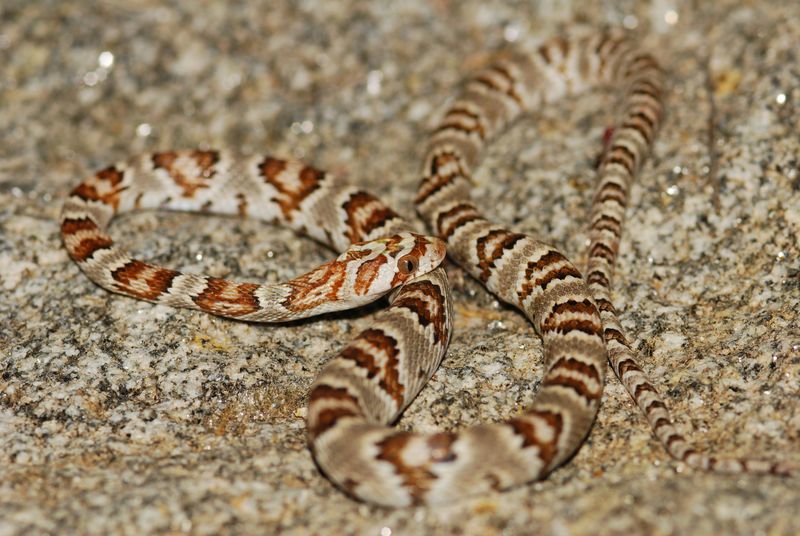
The Lyre Snake, not as well-known as rattlesnakes, is still a venomous resident of Arizona. It features distinct lyre-shaped markings on its head, lending it its name. This snake is nocturnal, often seen during the cooler hours of the evening.
While its venom is mild and primarily used for subduing small prey, it’s best admired from afar. The Lyre Snake’s secretive habits make sightings rare, a treat for those fortunate enough to encounter one. Respecting its space ensures that this elusive snake continues to thrive in Arizona’s diverse habitats.
Desert Kingsnake
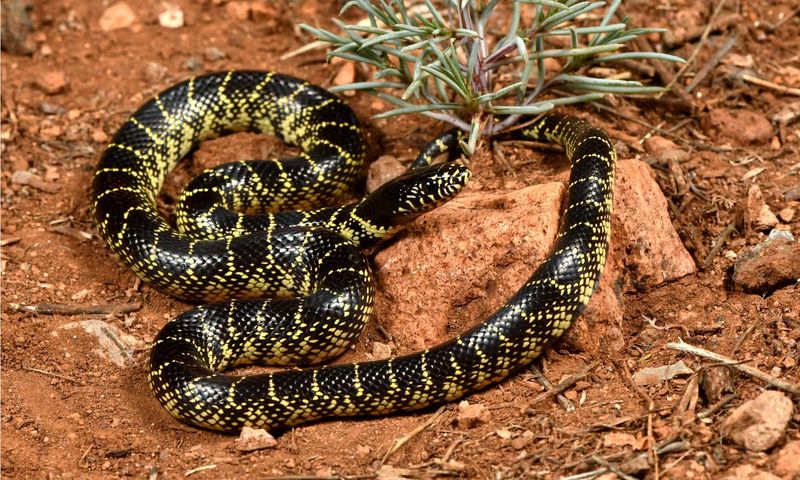
The Desert Kingsnake, while not a true venomous snake, often shares habitats with Arizona’s venomous species. Its striking black and white bands can be mistaken for more dangerous snakes. Known for its immunity to rattlesnake venom, it often preys on them.
Though non-venomous to humans, the Desert Kingsnake plays a crucial role in maintaining balance within the ecosystem. Spotting one provides an opportunity to observe nature’s checks and balances in action. Always observe from a distance, respecting their role in the desert’s intricate web of life.

